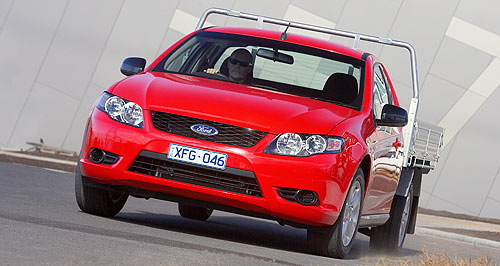News - General NewsOH&S is fleet issue - VACCSafety first: The Mercedes-Benz Vito van is one of Australia's five-star "workplaces". Fleet vehicles 'need to meet workplace guidelines'15 Sep 2009 By JOHN MELLOR EMPLOYERS who place their employees in trucks or cars as part of their working day must realise that they are providing a workplace and that it must comply with occupational and health guidelines. Victorian Automobile Chamber of Commerce (VACC) executive director David Purchase sounded this warning in a presentation at Freight Week last week which focussed on a Guide to Work Related Driving.Mr Purchase told GoAuto that a work vehicle provided by an employer is just as much a workplace as an office, factory or warehouse, and employers need to select the vehicles they provide with the best protection they can for their workers on the road and then ensure that the vehicle is operating to specification. Mr Purchase cited the Mercedes-Benz Vito van five-star ANCAP safety rating and said the Falcon and Commodore utes, the Volkswagen Transporter and the Hyundai iLoad, scored four-stars (Holden says its new MY10 Ute out this month will meet five-star standard). “But it is astonishing that there are still vehicles, in this day and age, that only qualify for a one-star ANCAP safety rating. One importer, KIA, has withdrawn its Pregio van from the Australian market due to its very low crash-test performance,” he said. “Why should there have ever been a different standard of compliance and obligation for work vehicles in matters of safety and risk prevention, as opposed to fixed plant and equipment where there is zero tolerance for low standards of safety?“And why shouldn’t new work vehicles offer the same standards of safety and protection as new passenger vehicles.” Mr Purchase warned that employers had an obligation to ensure a safe work place by making sure that vehicles were well-maintained. “The motor industry has the state’s fleet on its hoists week in and week out. “We know the condition of the fleet. And, from the shabby state of a surprising number of cars we see, we know what risks some people take with the well-being of their employees and the well-being of other road users. “We see the fleet returning as trade-ins – often, in the case of work vehicles, with the sign writing still on the side. “They’ve come in straight off the road, registered, probably in use the day before – with threadbare tyres, with tissue-thin disc rotors, with rusted seat-belt mountings. You would be astonished at what we see,” he said.  |
Click to shareGeneral News articlesResearch General News Motor industry news |














Facebook Twitter Instagram